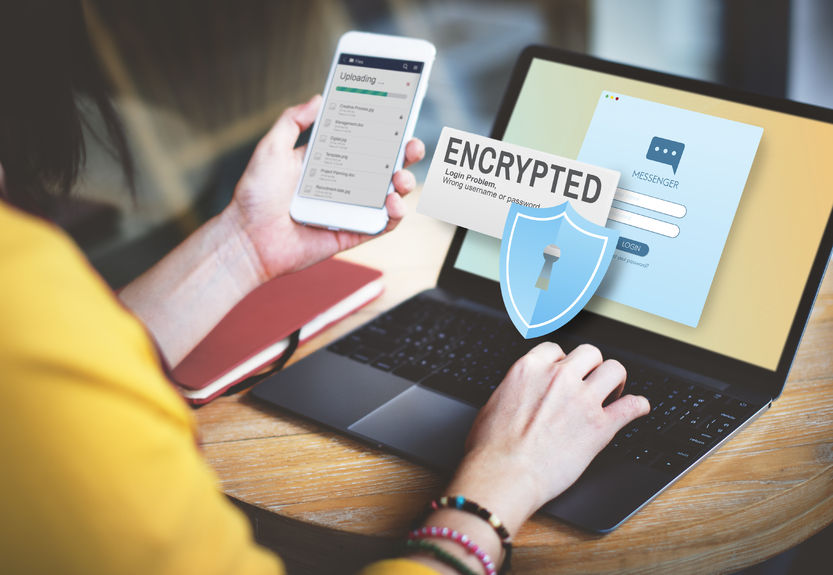Cybersecurity professionals will often say that you shouldn’t send anything by email that you wouldn’t put on a postcard. Although most people believe that email is private, unencrypted email can be intercepted at many points between the sender and the recipient.
Encrypted email is the minimum requirement to ensure that your information stays secure, but it’s not enough. There are several features that you need to make your messaging secure.
Encrypted email
End-to-end encryption keeps data secure at every step of its journey. When you send an unencrypted email, it goes from your device to your email service provider’s server, where it is stored for some time. A copy of the message passes through servers of other organizations in different locations, where it may also be stored. When the email arrives at the recipient’s email service provider, it is stored on their server as well.
Some email providers encrypt messages while they are traveling, but not when they are at rest, stored on one of the servers. This means that anyone with access to those servers can see data contained in the email.
End-to-end encryption is the only type of security that allows for truly encrypted email. Recipients who don’t have a secure email provider must log in to a secure web portal to view emails without compromising security.
Phishing attack prevention
A secure email provider should offer tools to prevent phishing attacks, which are fraudulent emails that trick employees into revealing your company’s data to unauthorized people. Your email’s spam filter should effectively flag emails that are likely to be fraudulent, helping you avoid costly data breaches.
Ransomware filters
Ransomware is software that encrypts your company’s data when an employee clicks on a link in an attacker’s email. The software downloads automatically, and it locks your data so that you can’t access it until you pay a ransom.
Your email should have spam filter settings that will flag emails that may have dangerous attachments, and your secure email provider may be able to scan all of your incoming attachments and identify ransomware or other software that may harm your computer.
Data leakage protection
Careless or disgruntled employees may send confidential information via email. Your email provider can prevent this by scanning email subject lines, body content and attachments, and looking for defined terms that are likely to identify information that shouldn’t be emailed. The email service then blocks the sensitive data from being sent. Emails can also include automated legal notices that alert recipients not to share data.
Some employees may not realize that a document they’re emailing contains metadata with data that shouldn’t be shared. A secure email provider may automatically convert documents to a PDF or other shareable format, while removing metadata that contains sensitive information.
These up-to-date security measures help make email security something even the least tech-aware employee can handle through effective training paired with sophisticated automation and passive detection.
Source: iQuanti, Inc.

